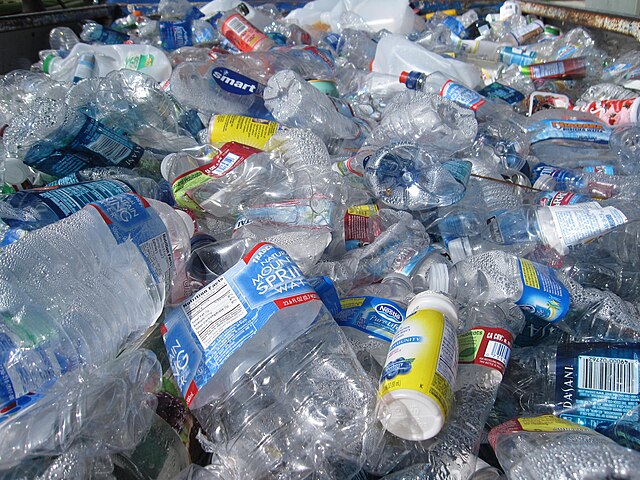
We would all like to be rid of plastic waste, but unfortunately, it is here to stay. It is found everywhere on our planet, and all throughout our food and water supply. Worse yet, recent research has revealed that the contamination of our food supply is even worse than we had previously imagined.
How Bad is the Problem?
A recent study from Ocean Conservancy and the University of Toronto[1] found that 88% of food protein sources (chicken, beef, fish, and even plant-based burgers) contain high levels of plastic particles, even if they are classified as “organic”.
Can vegetarians breathe easy? Not quite. In fact, a study published in 2020 in the Environmental Research journal found that edible fruits and vegetables also contain high levels of microplastics and nanoplastics[2].
Bottled water is full of plastic too: another study published in the Proceedings of the National Academy of Sciences[3] found that one litre of bottled water typically contains roughly one quarter of a million nanoplastic particles: much higher than previous estimates which were based on microplastics. This is because nanoplastics are even smaller than microplastics. A nanoparticle measures less than 0.001 millimetres in diameter. This made them very difficult to detect until recently.
Is There Anything We Can Do?
Unfortunately, reducing your exposure to zero is a pipe dream. Microplastics are so prevalent that they have been found in the Marianas Trench: the deepest and most isolated place on Earth[4]. But there are certain processes that can remove or reduce the plastic particles in your diet, and we can start with water, because water is such a critical part of our diet.
Tip #1: Drink tap water.
People have preferred bottled water over tap water for many years, but an analysis of microplastic contamination in tap water and bottled water published by IJERPH, the International Journal of Environmental Research and Public Health[5], found that tap water had generally less microplastic particles than bottled water: a phenomenon which the researchers attributed to the purification processes that are performed on tap water. Of course, this depends on where you live.
Tip #2: Avoid reusable plastic bottles.
The IJERPH study found that contrary to what you might expect, single-use disposable plastic bottles actually have fewer microparticles than reusable plastic bottles, despite their flimsy appearance. The researchers attribute this to the fact that as plastic ages and undergoes the wear and tear of use, it becomes more vulnerable to erosion from the water. Even glass bottles were found to contain microparticles, because of rubber or plastic in the lid.
Tip #3: Use high-quality water filters.
Not all water filters are the same. Brita, for example, makes an “Elite” filter which is certified to remove so-called “Class I” particles as small as 0.0005 millimetres[6], but their regular filter cannot do this. Unfortunately, the Elite filter is 3 times more expensive than the standard filter. Nevertheless, if you live in an area with good municipal water treatment and you then run that tap water through a Brita Elite filter, you will have water which is far cleaner and safer than bottled water.
Tip #4: Avoid highly processed foods.
While the Ocean Conservancy/UofT study found microplastics in all proteins, they found the highest levels in highly processed foods. Chicken nuggets, breaded shrimp, and fish sticks are examples of highly processed foods, even when they are plant-based vegan substitutes. Researchers surmise that extra particles are added to highly processed foods during the processing and packaging stages. Such foods are handled by workers with plastic gloves, pumped through machines with rubber or plastic components, and often packaged in plastic bags.
Tip #5: Look for chicken breast recipes.
Unprocessed chicken breast had the lowest microplastic contamination of all the proteins tested in the Ocean Conservancy/UofT study.
What Else Can We Do?
Ideally, we would try to reduce the problem at the source, and industry would take strong measures to reduce the amount of plastics they release into the environment and into our food supply. Unfortunately, political advocacy is difficult. Many people are wary of environmental advocacy because they see it as a threat to personal liberty, and this makes it difficult to advance an agenda which could infringe upon personal liberties and increase the cost of living for all of us.
Therefore, you as an individual cannot rely on controlling the problem “out there” in the world, but you can try to reduce your personal exposure through the choices you make in your own kitchen.
Note: This is a guest post written by my husband, Michael Wong, P.Eng, MBA.
References
- Milne, M., De Frond, H., Rochman, C., Mallos, N., Leonard, G., Baechler, B. (2024). Exposure of U.S. adults to microplastics from commonly-consumed proteins. Environmental pollution, 343, 123233. https://doi.org/10.1016/j.envpol.2023.123233.
- Conti, G., Ferrante, M., Banni, M., Favara, C., Nicolosi, I., Cristaldi, A., Fiore, M., Zuccarello, P. (2020). Micro- and nano-plastics in edible fruit and vegetables. The first diet risks assessment for the general population. Environmental research, 187, 109677. https://doi.org/10.1016/j.envres.2020.109677.
- Qian, N., Gao, X., Lang, X., Min, W., Rapid single-particle chemical imaging of nanoplastics by SRS microscopy, Proceedings of the national academy of sciences, 121 (3), e2300582121. https://doi.org/10.1073/pnas.2300582121
- https://oceanblueproject.org/plastic-pollution-in-the-mariana-trench/
- Gambino, I., Bagordo, F., Grassi, T., Panico, A., & De Donno, A. (2022). Occurrence of Microplastics in Tap and Bottled Water: Current Knowledge. International journal of environmental research and public health, 19(9), 5283. https://doi.org/10.3390/ijerph19095283
- https://www.brita.com/assets/23601607167498ba405a22f7692b3b86.pdf
About the Author: Rebecca Wong has a BA in English Literature from the University of Waterloo and has been working in the herbal business since 2000. She studied at the Ontario College of Traditional Chinese Medicine under respected authorities Paul Des Rosiers and Vu Le, and graduated from the East West School of Planetary Herbology under Michael Tierra. She received training as a yoga teacher at The Branches in Kitchener/Waterloo, and therapeutic yoga teacher training from the School for Somatic Soulwork under Deniz Aydoslu. She now teaches yoga for anxiety, depression and burnout at Rebecca's Restful Yoga Studio in Toronto.
